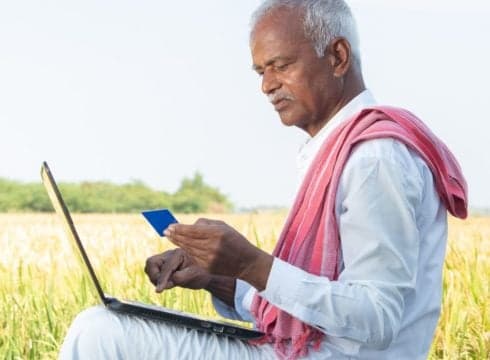Only 20.26% of rural India and 64.84% of urban India population have internet access presently
The country’s 80% rural population and 35% urban population is yet to adopt a digital mode of payment
Besides digital bill payments, the people residing in remote villages are likewise unable to access even the basic banking facilities and proper infrastructure
Inc42 Daily Brief
Stay Ahead With Daily News & Analysis on India’s Tech & Startup Economy
The rural population of India boasts around 70% of the total population in the country. A McKinsey report states that despite the prominence of urbanization, the rural population is likely to account for 63% of the total market in India by 2025.
Even the country’s rural economy greatly contributes around 46% to the national income. It marks the humongous potential and sustainable growth of rural India in the market. Unfortunately, issues like lack of infrastructure, digital poverty, low skill development, illiteracy etc. pose huge challenges in their road to growth.
As per the IAMAI report, only 20.26% of rural India and 64.84% of urban India population have internet access presently. However, those living in rural India are not as isolated from internet access as before. A ‘mobile-first’ rural India generation already exists today.
The country’s 80% rural population and 35% urban population is yet to adopt a digital mode of payment, as per ET statistics. It signals the widened digital gap in rural India existing for ages. The inability to adopt a digital payment system prevents the rural population of India to emerge in the mainstream.
However, the post-demonetization period witnessed considerable growth in the number of rural users using PoS and digital payment interface. Besides digital bill payments, the people residing in remote villages are likewise unable to access even the basic banking facilities and proper infrastructure.
Due to this, cash payment is still the most preferred payment method in rural India. They prefer to spend whatever livelihood they earn strictly via cash.
Thus, digital inclusion and financial inclusion seems to be a disenchanted dream for rural India unless serious efforts are made.
Undoubtedly, digital empowerment of rural India is important to bridge the digital gap. The same is evident in the existing series of stunning policies and initiatives by the Government of India mentioned below.
Government Policies & Initiatives For Digital Empowerment
The Indian Government and other regulatory bodies launched several policies and initiatives to facilitate digital empowerment, especially beneficial for rural India.
The Prime Minister’s Digital India programme is no more a new concept. Launched on July 1 2015, the campaign introduced new initiatives to ensure that all government services digitally reach the citizens with high-speed internet including the rural India population.
Besides, the Bharat Net Project- a flagship mission by the Government is also likely to enhance internet services, e-banking, e-governance, e-education etc. to the villages in India. Intending to connect every 2,50,000 Indian Gram Panchayat and offer 100 Mbps connectivity, it aims to boost digital empowerment in rural areas.
The Government’s financial inclusion scheme Pradhan Mantri Jan Dhyan Yojana (PMJDY) that launched a few years back also facilitates online transactions through RuPay Debit Card. It contributes to the financial and digital inclusion of rural India.
Role Of Digital Payments To Take Rural India Digital
The rural population of India holds significant importance in ensuring the economic development of the country. It is the reason why many fintech companies are focusing on financial inclusion, especially in rural India. India had been mostly a cash-driven country in the pre-demonetization period. But with the unfolding of stunning initiatives by the Government, urban India has steadily shifted to digital.
However, the problem lies with the people in small rural households. It is a huge struggle for even ESCOM to collect recurring bills from remote villages that have access to electricity. The Government and the DISCOM pan-India face a huge challenge to collect their electricity bills as they just stand at INR 30 or 40.
To cater to this ever-lasting problem, many fintech companies in India are making serious efforts to deploy lakhs of PoS, Kiosks, and Mobile Vans across rural India. This noble initiative compliments in bridging the digital gap in rural India by enabling smooth digital transactions like electricity bills, mobile bills (pre-paid & post-paid), DTH, Water, LPG gas, etc.
The exclusive mobile vans play a phenomenal role in collecting consumer bill payments right from the doorstep of rural households where the collection is a huge challenge. The payments are facilitated through net banking, mobile banking, UPI, debit or credit card, and even cash. These fintech companies ensure a blockchain-based payment gateway that is fully safe & secured and approved by NPCI or BBPS.
In addition to this, the National Bank for Agriculture and Rural Development (NABARD) and other Government bodies also offer varied monetary facilities to rural people. The noteworthy facilities include long-term loans, short-term loans, more direct finance etc. for the financial inclusion of rural India. A case for example is the launch of two self-sustaining mobile vans in the districts of Kolar and Chikaballapur in rural Karnataka last month.
Summing Up
Today, billions of Indians including rural population are enabled with digital payments and transacting cashless and paperless.
It is solely possible by courtesy of the stunning initiatives by the Government and the impactful fintech companies in India. Through their array of digital bill payment services targeted towards rural India, they are enabling them with digital and financial inclusion by spreading digital empowerment. Thus, it makes clear that by firmly holding their hands, the digital gap in rural India can be filled.
{{#name}}{{name}}{{/name}}{{^name}}-{{/name}}
{{#description}}{{description}}...{{/description}}{{^description}}-{{/description}}
Note: We at Inc42 take our ethics very seriously. More information about it can be found here.


